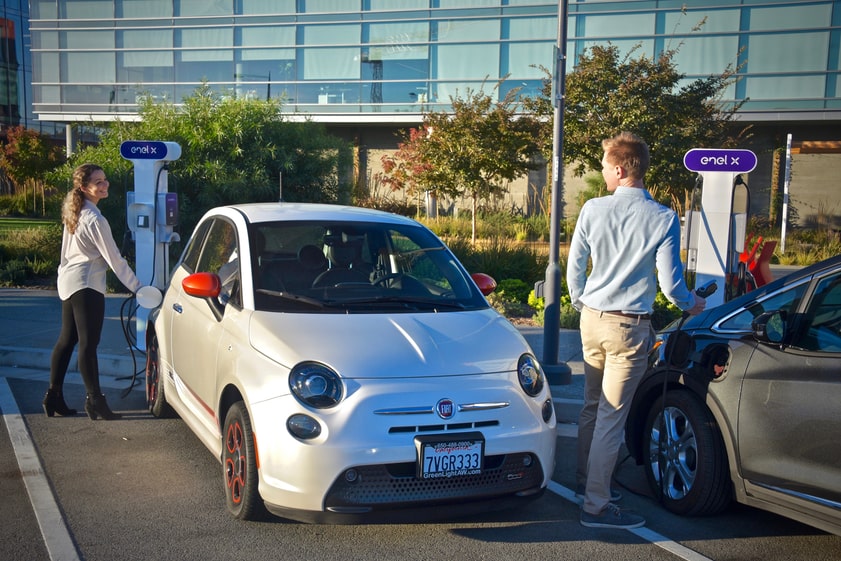Electric Vehicle Rebates and Incentives: A Comprehensive Guide

Who doesn’t want to save money on their next vehicle purchase? One of the more appealing aspects of shopping for an electric car or charging station is the wide range of federal, state, local, and utility incentives available, which can add up to thousands of dollars of savings. Navigating all of the available EV and EVSE incentives can feel a bit daunting, especially for first-time EV buyers. Fear not! We’ve done the homework and mapped out the current landscape of incentives below.
Federal EV Tax Credits
EV incentives from the federal government for the purchase of an eligible vehicle are substantial and can amount to a $7,500 tax credit. The exact amount of the credit is dependent on the vehicle’s battery size -- dedicated EVs (or BEVs) are eligible for the full $7,500, while plug-in hybrids (PHEVs), which have a smaller battery capacity, will receive a lower credit due to higher electricity usage.
For example, the Hyundai Ioniq Electric (BEV) is eligible for a $7,500 credit, while the Ioniq Plug-in Hybrid model has a battery capacity of 9kWh, and thus is eligible for a lower credit amount of $4,543. PHEVs need to have a battery capacity of at least 4kWh to qualify for an incentive. A full index of credit amounts is available here if you’re wondering exactly what amount is being offered for a certain vehicle.
This credit will not last forever. After a manufacturer has amassed aggregate sales of over 200,000 BEVs/PHEVs, the federal income tax credit for their vehicles will phase out. For this reason, incentives for GM and Tesla vehicles—the brands with the highest selling EVs--were gradually reduced throughout the last couple years, and have recently expired. This is good to keep in mind as more manufacturers bring new EV models to market—over time, as sales increase, incentives will phase out, so buying an EV sooner rather than later will ensure the largest possible federal tax credit.
Importantly, a tax credit is not a direct payment. It applies to what is owed to the federal government by an individual at the end of a given tax year. In other words, if you owe $20,000 in federal taxes for the year and are eligible for the full $7,500 credit, the amount you owe will be reduced by $7,500. Notably, you can’t receive a larger electric car tax credit than you owe in taxes. For instance, if you owe $6,000 in taxes for a year, your credit will only be $6,000, and the credit can’t be rolled into the next year.
In an electric vehicle lease, the manufacturer instead receives the tax credit. Consequently, while you’re shopping, it’s important to make sure that the cost gets rolled into the overall lease—typically, the tax credit will be structured into your payment, but this is up to the dealer, so it can be a good bargaining tool as part of negotiating a lease for an electric car.
State EV and EVSE Incentives
State incentives for electric vehicles vary depending on certain factors, including the type and battery size of the vehicle purchased (similar to the federal tax credit), whether the car is purchased or leased, and in some cases eligibility requirements such as the buyer’s household income. Most often, states offer cash rebates, as opposed to electric vehicle tax credits.
For example, in California, BEV buyers are eligible for a $2,000 cash rebate and PHEV buyers are eligible for a $1,000 rebate. In both cases, income level determines eligibility. When paired with the federal tax credit, California drivers can effectively take up to $9,500 off the price of a new electric vehicle.
Because state-specific incentives frequently change and evolve, it’s best to check what is currently available before shopping for a new EV. Many state incentive programs change year-to-year, or even expire. Some incentives are also only available to commercial businesses, not individual consumers.
Here are some key 2020 state incentives to keep an eye out for:
- • CALeVIP
- • Charge Ready Colorado
- • Charge Ready NY
- • DrivingPAForward
- • Rhode Island - Charge Up! Program
Utility EV Rebates
Some utilities also offer rebates for the purchase of an EV. A California driver living in the Southern California Edison service area, for example, could be eligible for an additional EV rebate of up to $1,000 from the utility.
Some utility incentives include free Level 2 home chargers for customers in lieu of a monetized rebate amount. In 2016, Enel X partnered with Sonoma Clean Power, a community choice energy provider in Northern California, to offer its customers a free JuiceNet-enabled smart charging station as part of its GridSavvy program. To date, over 3,000 smart EV charging stations have been installed in SCP’s service area, and the program has been a win-win for both SCP and its customers—EV drivers have the benefit of saving on charging costs with their free smart charging station.
EVSE Rebates
There are also a diversity of rebates available for the installation of an EVSE charging station (or in some cases, multiple installations), across the federal, county, and city levels, as well as from utilities.
The federal government offers residential customers who buy a JuiceBox Level 2 smart charging station from Enel X an additional tax credit of 30% off the purchase and installation cost, up to a maximum of $1,000. Purchase and installation need to take place during the calendar year 2020, and is claimed on your income tax return.
Utility EVSE Rebates
Counties, air quality districts and utilities offer a wide range of EVSE incentives that vary for residential and commercial installations. It’s best to see what incentives are available in your area and where you might be able to save. In many cases, utilities have programs with rebates and credits that will cover the cost of a JuiceBox or other EVSE charger purchase. These EVSE incentives can be a great way to have your cake and eat it too, with a new smart charger that allows you to maximize use of renewable energy and save money charging at the same time.
Below is a list of utilities that offer EVSE rebates for residential customers. Whether you are eligible for one of these utility rebates or not, you can purchase a JuiceBox here.
- • Alameda Municipal Power EVSE Rebate
- • Alliant Energy EVSE Rebate
- • Anaheim Public Utilities EVSE Rebate
- • BGE EVSE Rebate
- • Bear Valley Electric EVSE Rebate
- • Black Hills Energy EVSE Rebate
- • Braintree Electric Light Department (BELD) EVSE Incentive
- • Burbank Water & Power EVSE Rebate
- • Consumers Energy EVSE Rebate- Michigan
- • Dakota Electric EVSE Rebate
- • Detroit Edison EVSE Rebate
- • Glendale Water & Power EVSE Rebate
- • Groton Utilities EVSE Rebate
- • LADWP EVSE Rebate
- • Pasadena Water & Power (PWP) EVSE Rebate
- • Pepco EVSE Rebate
- • PSEG Long Island EVSE Rebate
- • Redding Electric Utility (REU) EVSE Rebate
Many utilities also offer rebates to cover the purchase of a residential EVSE, and also offer rate plans for EV owners that incentivize off-peak charging. Enel X has a comprehensive guide on Time-Of-Use rate plans, and what you need to know to save on electricity while charging at home.
When It’s Time to Buy
When you’ve decided it’s time to go electric—or in the case of current EV owners, stay electric—it’s a good time to take a comprehensive look at what EVSE incentives are available specific to your vehicle of choice and where you live. The wide combination of available incentives at the federal, state, local and utility levels can lead to huge savings, and in the case of the federal income tax credit, buying a qualified vehicle sooner rather than later could be highly beneficial before phase outs of the credit take effect. Whichever EV you choose, it’s good peace of mind knowing there are significant savings to be had as you take an important step in helping the world decarbonize transportation.







